This train has an unlikely association with Skagway, Alaska
Sugar Train is a Fun Ride
Many of us seated in the fifth and last of the two-story passenger cars are acting like jacks-in-the-box as we continually pop up from our seats, photographing one stunning island view after another as our toy railroad chugs along at a maximum of just 8 mph.
On the right we have the coastline to shoot and, later, the islands of St. Eustatius and Saba in the distance. The left is dominated by seemingly endless fields of sugar cane with a dramatic backdrop of cloud-capped mountains, villages and old estates.
Whenever our energy starts to flag from all the activity, our waitress always seem at hand to provide a free rum punch, pina colada or Diet Coke. Or the gospel chorus may appear on our car and sing something uplifting to bolster our spiritual sides.
Caribbean’s Only Railroad
We’re riding the St. Kitts Sugar Train, a one-of-a-kind tour in the Caribbean that’s likely to remain that way. Unlike most other islands, St. Kitts never tore up its train tracks even after they went out of use back in 1970’s when sugar cane stopped being the island’s main economic mainstay..
Also called the St. Kitts Scenic Railway, this 90-minute tour uses a 500-hp diesel engine (made in Romania, of all places) to pull its five passenger cars along a 30-inch narrow gauge railroad bed built between 1912 and 1926 to transport sugar cane from the fields to the processing factory in the capital city of Basseterre.
The tracks still extend for about 30 miles but the Sugar Train uses only 18 of them, among the most scenic. The train departs Basseterre to travel northward where the tracks parallel and sometimes hug the Atlantic coastline. Chugging along at a maximum speed of just 8 mph, the train crosses three bridges up to 200 feet long over chasms as much as 90 feet deep.
Canopy Covered Top is Favorite Seat
When we board the train, almost everyone chooses the canopy-covered, open-air top deck of our car and its bench-style, cushioned seats extending along both sides. A few chose the lower level, which is enclosed and air conditioned. Seats there are in the form of rattan chairs clustered around a table located beside large vaulted, tinted windows.
We definitely get more of a feel for St. Kitts out in the open but the train also shakes, rattles and rolls up here quite a bit. People susceptible to motion sickness may find conditions more to their liking at the lower level. Ours is the last car, #5, and that allows us to notice how much #4 right in front keeps pitching and rolling from side to side. Not the steadiest photo platform whenever we shift to our “top” 8 mph speed.
 It’s important to choose the correct side of the car when you board: right for the coastline, left for the inland region. I go right, Linda sits across on the left; that way we can quickly trade places if necessary. With large tour groups, there may not be any open seating (like today). And the lurching train makes it impossible to stand in the center and take photos on both sides.
It’s important to choose the correct side of the car when you board: right for the coastline, left for the inland region. I go right, Linda sits across on the left; that way we can quickly trade places if necessary. With large tour groups, there may not be any open seating (like today). And the lurching train makes it impossible to stand in the center and take photos on both sides.
Last Car Good for Photograpahs
We choose the last car since it allows us to lean out and photograph the entire train whenever it comes to a curve. Best morning sunlight starts out with the sun on the right side of the train but as we circle the northern end of St. Kitts the light shifts to the left.
Live Commentary
Wherever you sit, everyone hears the live running commentary, not taped, which makes the experience much more spontaneous and entertaining. And this is how we learn of the amazing association with this Caribbean narrow gauge train ride with one in Skagway, Alaska: they were both started by the same person who chose locations where many miles of abandoned but still usable rail lines were available. (This trivia should be good info for making small wagers the next time you’re in Skagway or St. Kitts).
Ever since the Sugar Train began running in January, 2003, there has been a kind of waving contest between passengers and the locals, who are known as Kittians. We’re advised by our conductor that passengers always are supposed to wave first. Whenever we pass a school yard or a group of youngsters, they gallop toward the train with their arms waving in the air. Their unadulterated enthusiasm always exceeds our best waving attempt.
Trip Is Not a Complete Circle
After our 18-mile trip from Basseterre, we arrive at a roundabout where the train stops in a circle. We will not return to the city by train but by buses, the same ones that took us from the cruise port to the train station. They arrive with another group of passengers who will retrace our route. .
Depending on demand, the train may make another round trip later in the day. In summer, outside of the cruise ship season, the train may not even run every day. For more information, visit .
For a quick overview of the northern half of St. Kitts, no other tour offers such high vantage points, visits the same out-of-the-way places or does it with such style and fun.
If you’re not into photography, you may find the last 20 minutes of scenery a bit repetitious. If so, sip a rum punch and just relax to the rock and rolling of the Sugar Train. And see if any more of that sugar candy is left. That stuff is addictive!

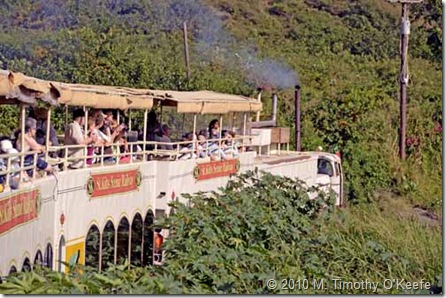

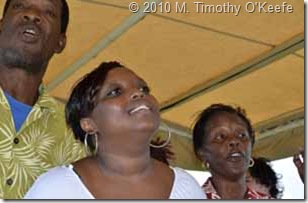
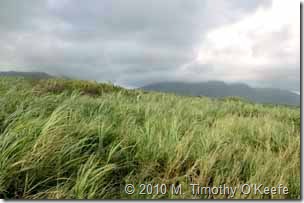
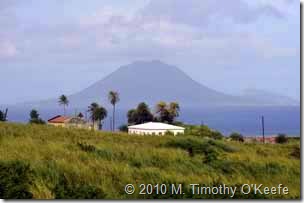
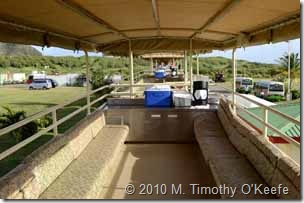
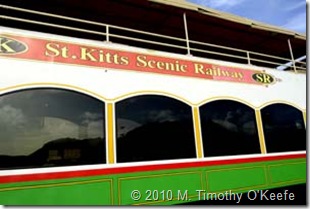
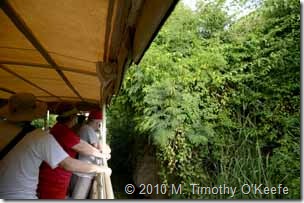
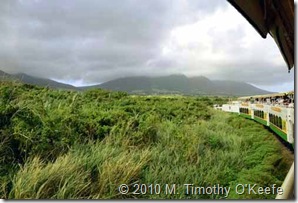
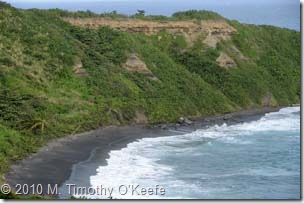
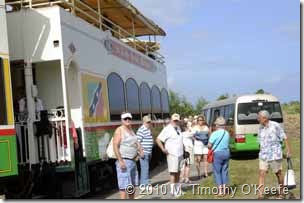
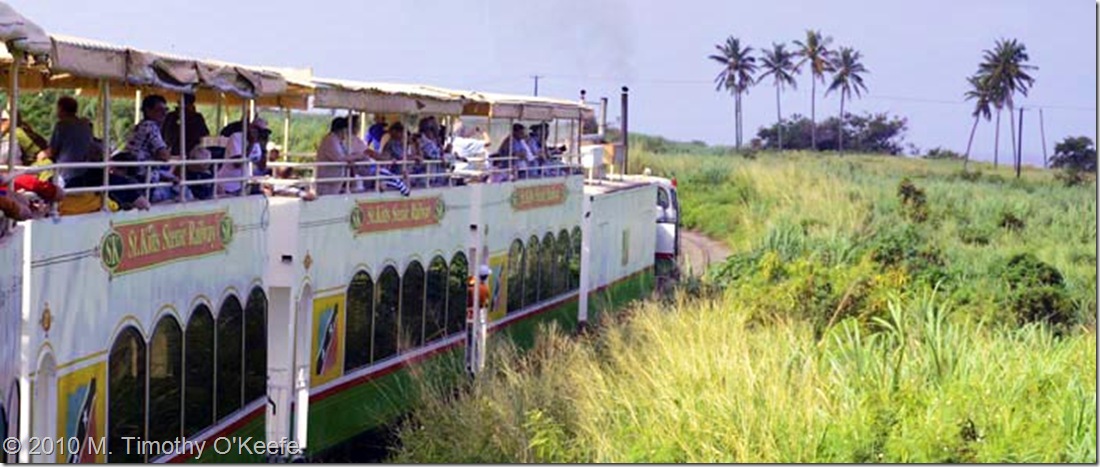
 Follow
Follow